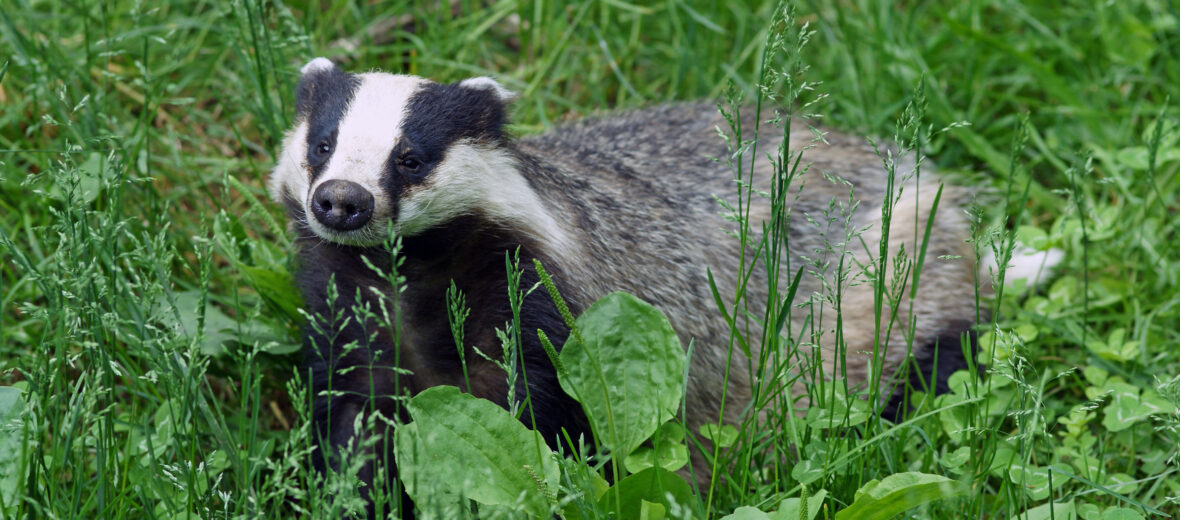
The European badger, aka Eurasian badger, is found throughout the majority of Europe and also in Asia. Even though they prefer conifer forests, deciduous forest, and mixed woodlands near open fields, they can handle a wide variety of other habitats as well. These critters can also be seen in scrublands, farmlands, grasslands, hedges, riverine areas, semi-deserts, and steppes. Due to their wide-spread distribution and stable numbers, these creatures are listed as Least Concern by the IUCN. Their largest threats are from hunting and trapping.
First the Stats…
Scientific name: Meles meles
Weight: Up to 26 lbs.
Length: Up to 2.3 feet
Height: Up to 11.81 inches tall
Lifespan: Up to 16 years
Now on to the Facts!
1.) European badgers are predominantly nocturnal (active at night), with some crepuscular (active at dawn and dusk) activity.
2.) These badgers are very social, only amongst themselves. They gather into colonies of up to 12 individuals.
3.) A group of badgers is called a cete, clan, colony, sett, or company.
4.) In each colony, there are several large setts (communally maintained burrows) that are located throughout their territory. The primary sett is typically housed by the adults.
5.) These critters eat earthworms, eggs, frogs, insects, lizards, mice, rats, hedgehogs, rabbits, fruit, and carrion (dead animals).
But wait, there’s more on the European badger!
6.) Males tend to be monogamous (mating once in their lifetime), while females tend to be more polygamous (mating with more than 1 partner).
7.) The males won’t defend their potential mate from other males, but will defend the females against predators.
Did you know…?
Their name hails from the French “bêcheur”, meaning digger.
8.) Mating seasons last from February – May and August – October.
9.) Females undergo up to a 12 month gestation (pregnancy) that yields up to 6 cubs.
10.) In Wales, they are called “moch daear”. This translates to earth pig.
But wait, there’s still more on the European badger!
11.) Due to their long claws and thick skin, they are able to successfully kill and eat hedgehogs.
Did you know…?
These badgers can run up to 19 mph.
12.) They defecate (poop) in communal toilets that are located away from their setts.
13.) A single badger can eat several hundred earthworms in a single night.
14.) Wolves, lynx, wolverines, brown bears, and eagle owls all prey on these badgers.
Now a Short European Badger Video!
Be sure to share & comment below! Also, check out the Critter Science YouTube channel. Videos added frequently!
Want to suggest a critter for me to write about? Let me know here.



